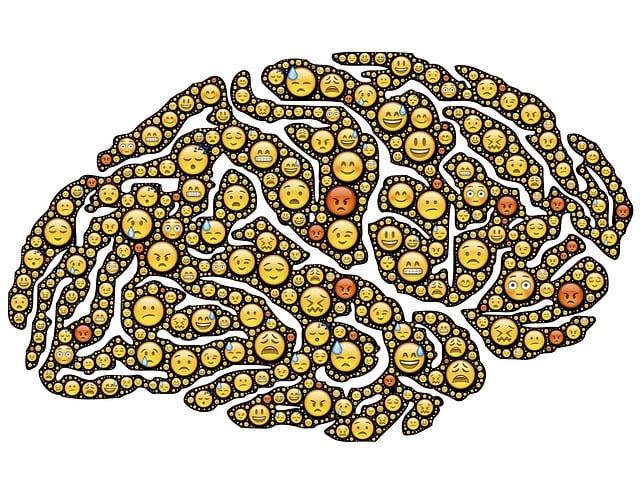Implementing successful Boulder Anxiety Therapy programs requires understanding community needs through local organization engagement and research. Tailored initiatives target specific groups, reduce stigma, and provide accessible relief, fostering resilience against anxiety. Inclusive outreach strategies, leveraging social media and partnerships, enhance mental healthcare access. Strong collaborations with cultural centers and non-profits reach underserved populations and address unique needs. Strategic planning, safe spaces, group sessions, evidence-based techniques, and data-driven evaluation ensure Boulder Anxiety Therapy's effectiveness and long-term sustainability in promoting emotional well-being.
Community outreach programs play a pivotal role in bringing essential mental health services, like Boulder Anxiety Therapy, to those who need them most. This article explores the strategic implementation of such programs, from understanding community needs and identifying target groups, to designing effective communication strategies and building collaborative partnerships. Discover best practices for delivering therapy sessions in community settings and learn how to measure success and ensure long-term engagement.
- Understanding Community Needs: Identifying Target Groups for Boulder Anxiety Therapy Programs
- Designing Comprehensive Outreach Strategies: Effective Communication and Engagement Techniques
- Building Partnerships: Collaborating with Local Organizations for Amplified Impact
- Implementing and Delivering Services: Best Practices for Anxiety Therapy Sessions in Community Settings
- Measuring Success and Ensuring Sustainability: Evaluating and Maintaining Long-Term Community Engagement
Understanding Community Needs: Identifying Target Groups for Boulder Anxiety Therapy Programs

Understanding Community Needs is a crucial step in implementing successful Boulder Anxiety Therapy programs. Identifying target groups requires a nuanced approach to address specific anxieties prevalent within the community. By conducting thorough research and engaging with local organizations, mental health professionals can pinpoint populations most affected by anxiety disorders. This may include youth facing academic pressures, working adults dealing with work-life balance issues, or older individuals coping with loneliness and isolation.
Targeting these groups for Boulder Anxiety Therapy initiatives should focus on reducing the Mental Illness Stigma, fostering Inner Strength Development, and providing accessible Anxiety Relief. Customized programs can then be designed to cater to the unique challenges of each group, ensuring that therapy is inclusive and effective in building resilience against anxiety-related issues.
Designing Comprehensive Outreach Strategies: Effective Communication and Engagement Techniques

Designing comprehensive outreach strategies is a crucial step in fostering community engagement and enhancing access to mental healthcare services, such as Boulder Anxiety Therapy. Effective communication involves tailoring messages to resonate with diverse audiences while incorporating cultural sensitivity in mental healthcare practice. This ensures that interventions like Self-Care Routine Development for Better Mental Health are inclusive and relevant to all.
Engagement techniques should be interactive and community-driven, empowering individuals to take an active role in their emotional healing processes. Utilizing various channels like social media, community events, and partnerships with local organizations can help reach a broader spectrum of people. By combining these strategies, communities can create sustainable change, improve mental health outcomes, and build resilient, supportive environments.
Building Partnerships: Collaborating with Local Organizations for Amplified Impact

Building strong partnerships with local organizations is a key strategy for enhancing the impact of community outreach programs, especially in mental healthcare initiatives like Boulder Anxiety Therapy. By collaborating with entities already rooted in the community, such as cultural centers or non-profit groups, mental health professionals can gain better access to hard-to-reach populations and address unique needs within diverse communities. These partnerships allow for a deeper understanding of local contexts, including cultural sensitivities in mental healthcare practice, which is crucial for providing culturally competent services that foster trust and encourage participation.
For instance, engaging with community organizations that cater to specific ethnic or socioeconomic groups can help risk assessment for mental health professionals by identifying existing support systems and potential barriers to care. This collaborative approach not only amplifies the reach of outreach programs but also empowers local communities to take ownership of their mental well-being. Moreover, such partnerships can boost the confidence of both healthcare providers and community members, creating a more inclusive and supportive environment for addressing various mental health concerns.
Implementing and Delivering Services: Best Practices for Anxiety Therapy Sessions in Community Settings

Implementing community outreach programs for anxiety therapy sessions requires careful planning and a deep understanding of the local needs. In Boulder, Anxiety Therapy services have evolved to cater to diverse populations, ensuring accessibility and effectiveness. Best practices involve creating safe, inclusive spaces that encourage open dialogue and foster trust among participants. Group sessions, for instance, can provide a sense of community and shared experience, enhancing emotional regulation skills through peer support.
Delivering these services in community settings facilitates the reach and impact of therapy. By integrating activities like mindfulness exercises, cognitive-behavioral techniques, and stress management strategies tailored to daily routines, Boulder Anxiety Therapy aims to equip individuals with practical tools for managing anxiety. This holistic approach not only promotes emotional healing processes but also empowers participants to maintain long-term mental wellness in their everyday lives.
Measuring Success and Ensuring Sustainability: Evaluating and Maintaining Long-Term Community Engagement

Measuring success is a vital step in evaluating the impact and effectiveness of community outreach programs. For Boulder Anxiety Therapy initiatives, this could involve tracking participant engagement, satisfaction levels, and behavioral changes over time. By collecting qualitative and quantitative data, such as feedback surveys, attendance records, and follow-up sessions, organizations can assess the program’s overall performance. This data-driven approach allows for continuous improvement and ensures that the initiative remains aligned with the community’s evolving needs.
Sustainability is equally important to guarantee long-term community engagement. Implementing strategies like fostering a sense of ownership among participants, building partnerships with local stakeholders, and integrating Compassion Cultivation Practices can contribute to sustained success. Addressing potential challenges, such as volunteer burnout prevention and managing resource allocation, is crucial. Additionally, by incorporating programs that target Depression Prevention and promote resilience, outreach efforts can create a supportive environment, empowering individuals to maintain their mental well-being over the long haul.
Community outreach programs focused on Boulder Anxiety Therapy can significantly improve mental health support within local communities. By understanding specific community needs, employing strategic communication, building partnerships with local organizations, and implementing best practices in therapy sessions, these initiatives can foster lasting engagement. Continuous evaluation and adaptation ensure the sustainability of these programs, ultimately enhancing the well-being of those they serve.














